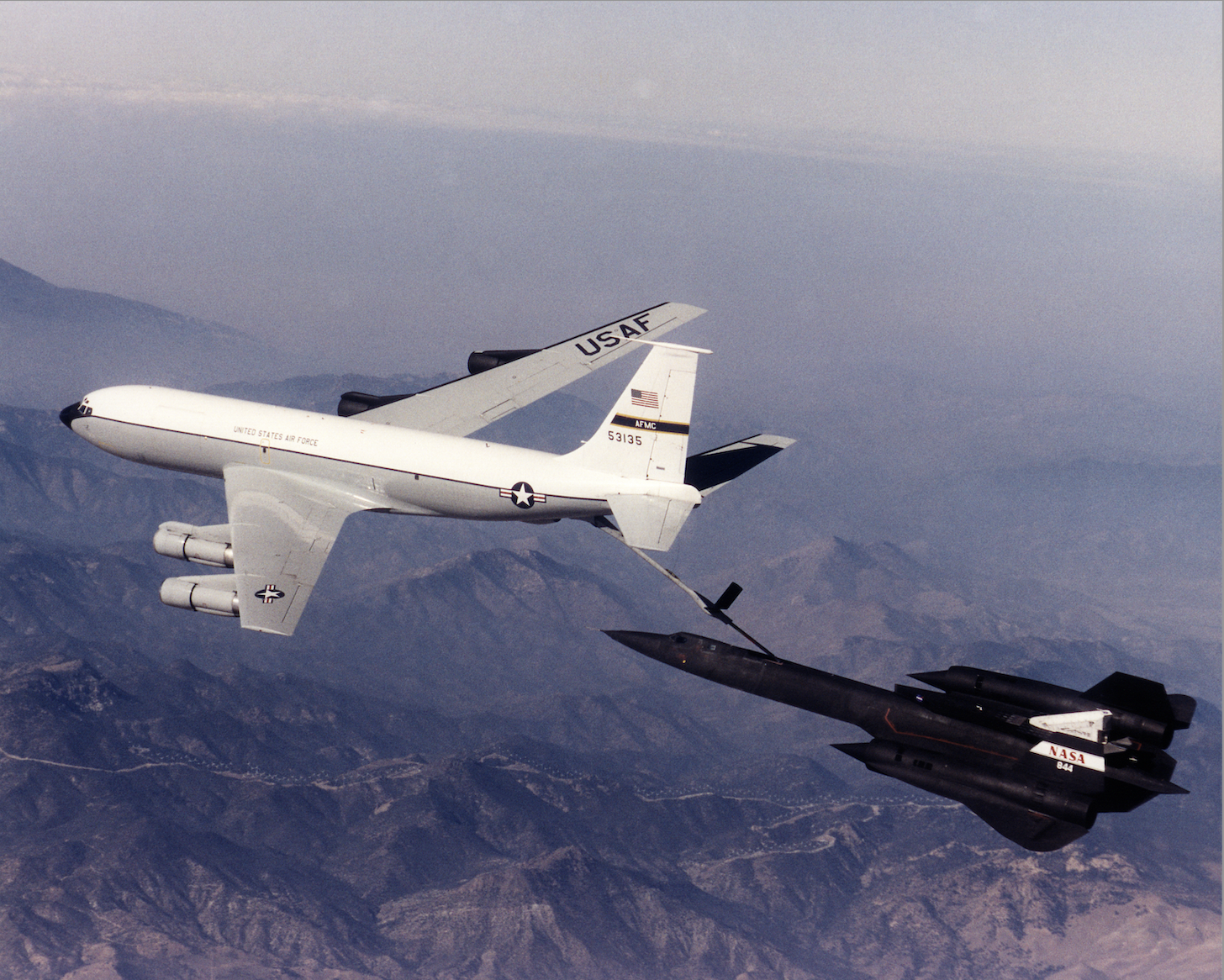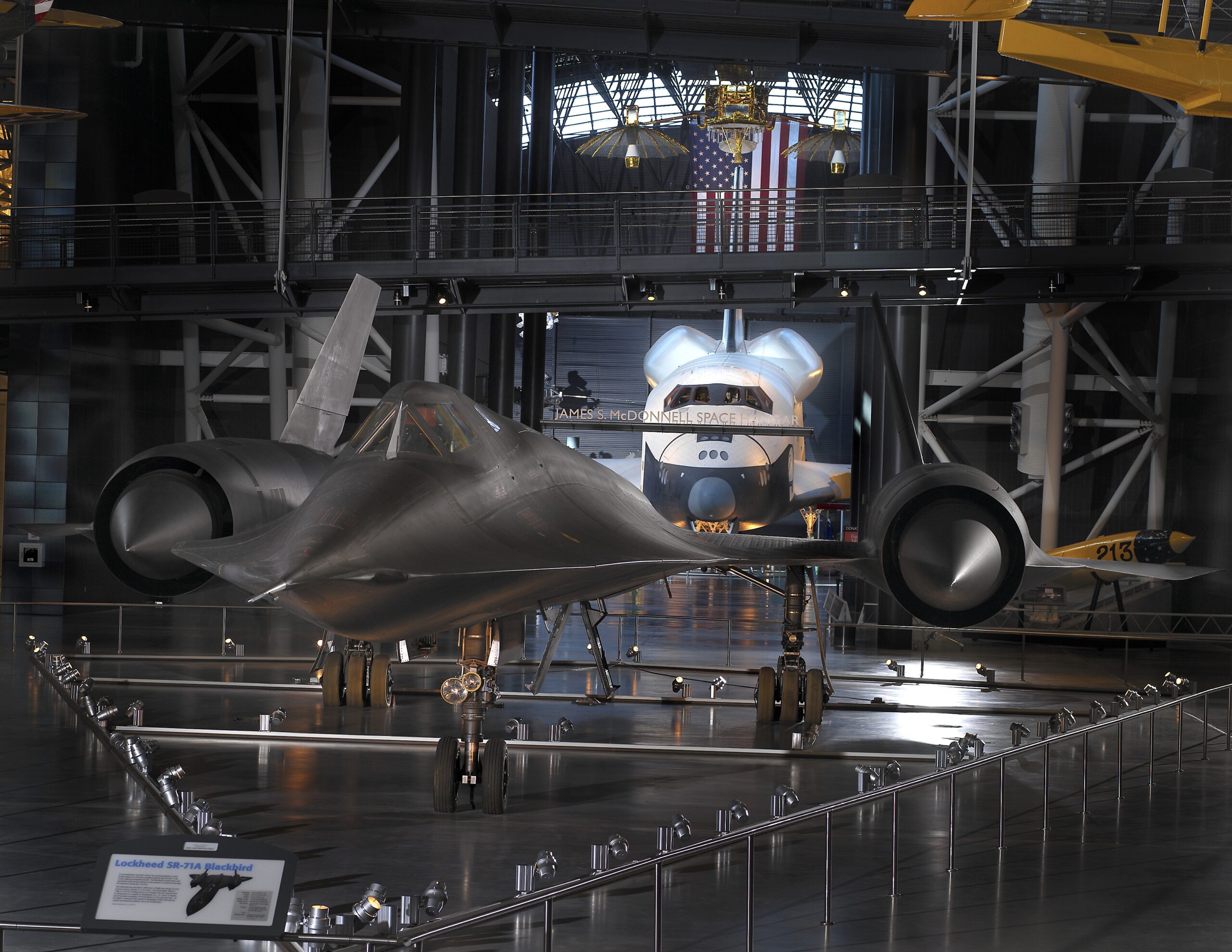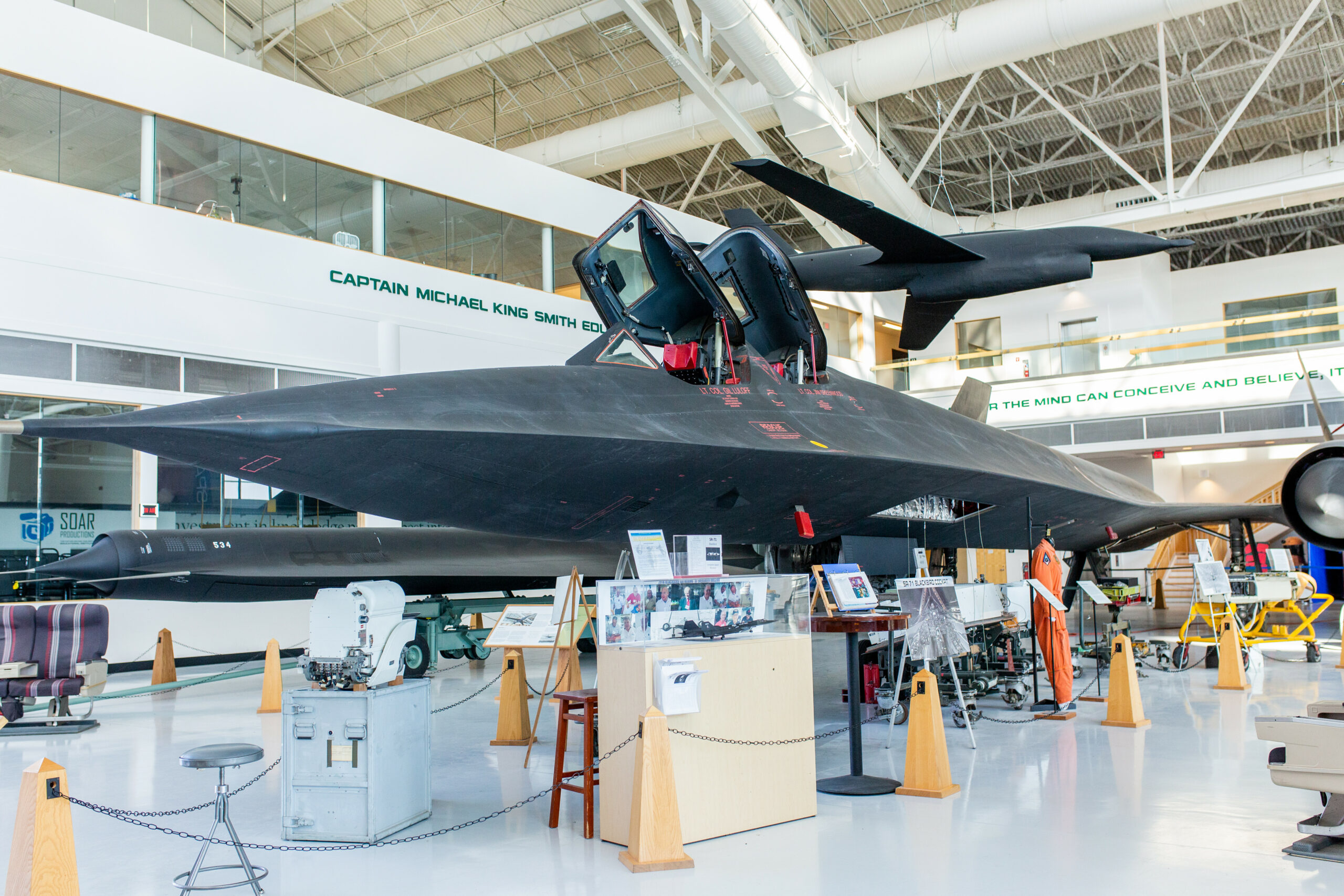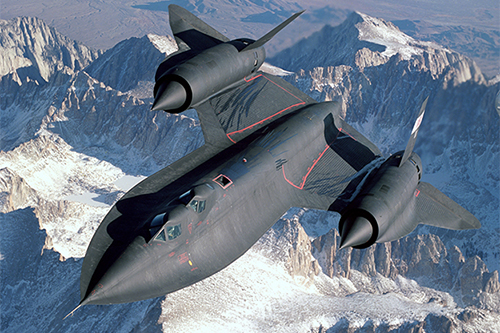Faster Than a Speeding Bullet
The SR-71 Blackbird resulted from a Cold War-era need for a high-speed, high-altitude strategic reconnaissance aircraft. This aircraft cruised at more than three times the speed of sound, which translates to just over 2,000 miles per hour. No other reconnaissance aircraft has operated in more hostile airspace or with such impunity. To this day, the SR-71 holds the records for the world’s fastest jet-propelled aircraft and the fastest aircraft to be propelled by air-breathing engines.
History of The SR-71 Blackbird
December 22, 1964
The First SR-71 Blackbird Takes Flight
The SR-71 resulted from growing tensions with communists in Eastern Europe, which led to the Cold War. The aircraft was created by Skunk Works, an official pseudonym for the American aerospace corporation Lockheed Martin. The Skunk Works was a top-secret team of engineers and scientists tasked with creating a reconnaissance aircraft like never before.
Anticipating the aerodynamic issues of traditional aircraft materials at high speeds and high altitudes, the SR-71 designers choose titanium, a relatively lightweight and heat-resistant metal. This metal was challenging to work with and hard to find. The Soviet Union had the best source for the metal, so the CIA set up shell companies to purchase materials from the very nation they were spying on.
The SR-71 also demonstrates some of the earliest uses of stealth technology. The black paint soaked up radar energy, and the aircraft’s distinctive shape helped minimize the chances of being detected in enemy airspace.
On December 22, 1964, the SR-71 saw its first flight with Lockheed test pilot Robert J “Bob” Gilliland at Palmdale, California.

1966 – 1990
The Service of the SR-71 Blackbird
For more than two decades, the SR-71 was sent on missions worldwide to photograph sites beyond the reach of spy satellites. In the two-seat cockpit, one person would operate the high-resolution cameras and reconnaissance technology while the other would pilot the plane. While active, no SR-71 was reportedly lost or damaged due to hostile actions. Below is a highlight of a few of the SR-71’s missions:
- Spring 1968: The Air Force’s 1st Strategic Reconnaissance Squadron (SRW) starts flying the SR-71 mostly over southeast Asia.
- 1982: The U.S. Air Force based two aircraft at the Royal Air Force Base Mildenhall to monitor missions in Eastern Europe.
- 1987: Kadena-based crews flew several missions over the Persian Gulf that revealed Iranian Silkworm missile batteries that threatened commercial shipping and American escort vessels.
- January 1990: 9th SRW ceased SR-71 operations

March 6, 1990
Coast-to-Coast in 64 Minutes
Lt. Col. Ed Yeilding and his RSO, Lieutenant Colonel Joseph Vida, flew a SR-71 from Los Angeles to Washington D.C. in 1 hour, 4 minutes, and 20 seconds. While on this flight across the United States, it broke four flight time records, including St. Louis to Cincinnati in 8 minutes at 32 seconds. Once it landed in D.C., the aircraft was retired and put on display at the National Air and Space Museum, where it remains today.

1990 – 1995
SR-71 NASA Research Programs
After the U.S. military discontinued use of the SR-71, NASA conducted various research projects with two of these aircrafts between 1990 to 1995. Data from these high-speed research programs were used to aid the development of future supersonic aircraft and propulsion systems, including high-speed civil transport.
In 1991, NASA engineer Martha Bohn-Meyer became the first female SR-71 crew member.

October 9, 1999
The SR-71’s Final Flight
After a brief rejuvenation of the SR-71 program, which brought two Blackbirds out of retirement, the U.S. Air Force made a final shut down of the program on June 30, 1999, at Edwards Air Force Base in California.
The Air Force transferred all remaining SR-71’s to NASA, and the final SR-71 flight was made by SR-71A #61-7980 on October 9, 1999, at the Edwards AFB Open House Air Show.

Frequently Asked Questions
Yes! The SR-71 Blackbird is still the fastest jet-powered aircraft in the world. It can fly from Los Angeles to Washington D.C. in 1 hour, 4 minutes, and 20 seconds.
The SR-71 can reach a speed of 2,124 miles per hour.
The SR-71 in the Space Museum flew from 1966 to 1997, ending its service with just over 3,512 hours of flight time. The aircraft was one of only two SR-71 Blackbirds to be reactivated in 1995 by the Air Force before the program was canceled in 1998. The last flight was on September 30, 1997 and it has been on display at the Evergreen Museum since 2002.
The SR-71 was created to operate in hostile airspace, and its designers incorporated some of the earliest uses of stealth technology. The aircraft features sharp edges and smooth lines between the fuselage and the wings, and black paint to make it virtually undetectable.
Have an SR-71 story you would like to share?
The Stats
55′ 7″
Wingspan
107′ 5″
Length
18′ 6″
Height
170,000
Pounds
3,418
KPH, Maximum Speed (2,124 MPH)
Physical Description
The jet is a twin-engine, two-seat, supersonic strategic reconnaissance aircraft. The airframes are constructed mainly of titanium and its alloys with vertical tail fins built of a laminated plastic-type material composite to reduce radar cross-section. The Pratt and Whitney J58 turbojet engines feature large inlet shock cones. The aircraft’s body is matte black with red accents. The special black paint is what gave the jet its nickname, Blackbird.

